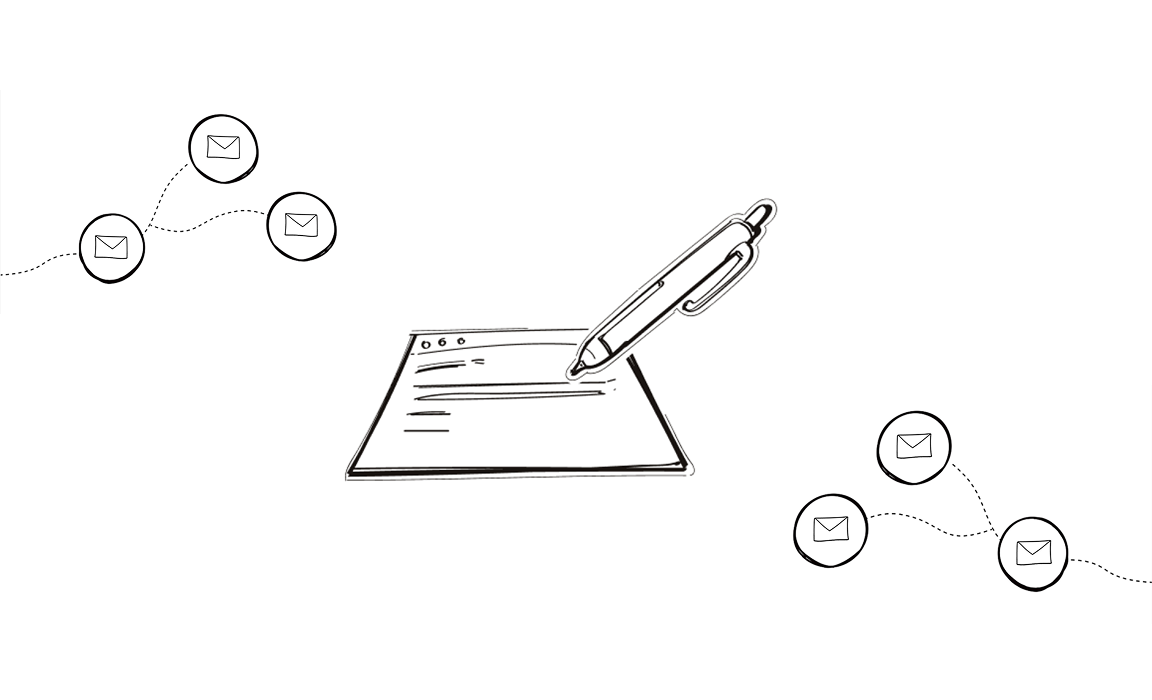The art of crafting persuasive outreach emails that convert strangers into valuable backlink partners requires finesse, personalization, and strategic timing. With search engines continually evolving their algorithms to prioritize quality backlinks, mastering the outreach process has never been more critical for digital marketing professionals looking to boost organic traffic and domain authority.
And successful link building outreach templates are the backbone of any effective SEO strategy.
Whether you’re a seasoned professional or just starting your journey in link building, having a collection of proven outreach templates can drastically improve your success rate and efficiency.
Therefore, in this comprehensive guide, we’ll explore various link building outreach templates. They have been tested and optimized for maximum response rates across different outreach scenarios.
You’ll discover templates for:
- guest posting
- broken link building
- resource page inclusion
- content promotion
and more. Each is designed to help you build quality backlinks efficiently while maintaining professionalism and establishing genuine relationships with site owners.
Why your link building outreach templates matter
Before diving into specific templates, understand why having well-crafted link building outreach messages is crucial for your SEO strategy:
- First impressions count – your initial outreach email often determines whether a site owner will collaborate with you or ignore your request.
- Efficiency at scale – using tested templates allows you to reach more link prospects without sacrificing quality.
- Consistent results – well-optimized templates deliver predictable response rates, making your link building strategies more reliable.
- Time savings – you won’t have to reinvent the wheel for every outreach email template you send.
- Measurable improvements – templates can be A/B tested and refined based on performance data.
Let’s now explore the essential components of effective link building outreach templates before diving into specific examples for different scenarios.
Anatomy of a successful outreach email

The most successful outreach email templates share several key elements:
Compelling subject line
Your subject line is the gateway to your email being opened rather than deleted. It should be:
- concise (6-10 words)
- specific rather than vague
- personalized when possible
- value-oriented rather than self-serving
Personalized introduction
Most site owners receive dozens of outreach emails daily. Make yours stand out with personalization, by:
- addressing the recipient by name
- referencing their recent blog post or specific work
- demonstrating you’ve done your homework
- including your job title and company for credibility
Value proposition
Clearly articulate the mutual benefits and significant value your proposal offers:
- What’s in it for them?
- How will their audience benefit?
- Why is your content uniquely valuable?
- What problem you’re solving for them?
Clear call-to-action
End with a specific, easy-to-act-upon request:
- keep it simple and direct
- offer a clear next step
- make responding easy
- include a gentle deadline if appropriate
Professional signature
Complete your email with your signature:
- your name and position
- company information
- social proof (if relevant)
- alternative contact methods
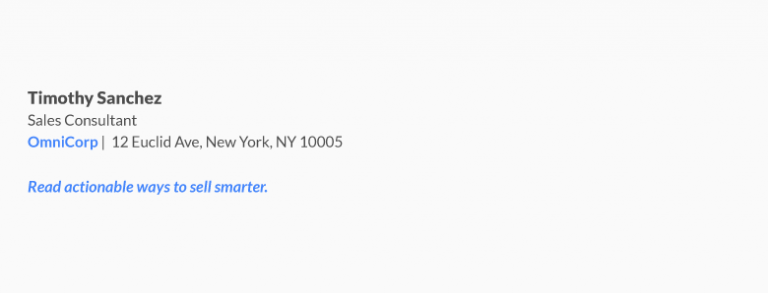
Now that we know the fundamental structure, let’s explore specific templates for different link building scenarios.
Guest post outreach templates
Guest posting remains one of the most effective link building strategies when done correctly. Here’s a template that consistently delivers results:
Standard guest post outreach template
Subject: [Personalized Guest Post Idea] for [Website Name]
Hi [First Name],
I’ve been following [Website Name] for some time now, and particularly enjoyed your recent article about [specific topic from their recent blog post]. Your point about [specific detail] resonated with me as I’ve been researching this area extensively.
I’m reaching out because I have a [guest post idea] that I believe would provide significant value to your readers. The article would cover [brief description of your proposed topic], including:
– Key point 1 with unique insight
– Key point 2 with actionable advice
– Key point 3 with relevant data/statistics
My background includes [briefly describe relevant experience], and I recently published content on [similar topic] at [mention notable publication if applicable].
Would you be open to a guest contribution on this topic? I’m happy to follow your guest post guidelines and can adapt the concept to better fit your target audience if needed.
Look forward to hearing from you,
[Your Name]
[Job Title]
[Company/Website]
[Social profiles or portfolio link]
Follow-up guest post template
If you don’t receive a response to your initial outreach, this follow ups template can help:
Subject: Following up: [Guest Post Idea] for [Website Name]
Hi [First Name],
I wanted to gently follow up on my previous email about contributing a guest article to [Website Name].
Since my last message, I’ve actually expanded on the concept and thought about some additional angles that might interest your readers:
– Additional compelling angle
– New data point or research finding
– Timely connection to recent industry developments
I understand you’re likely very busy, so I’ve also taken the liberty of drafting a brief outline that aligns with your usual content style.
Would you be interested in seeing this outline or discussing how I could create a valuable piece for your audience?
Best regards,
[Your Name]
[Contact details]
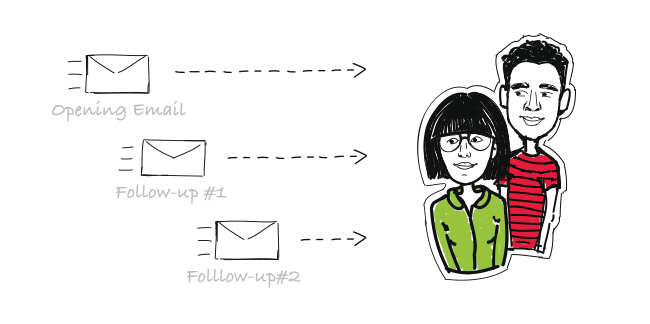
Broken link building outreach templates
Broken link building is one of the most mutually beneficial outreach strategies, as you’re helping webmasters improve their user experience while securing backlinks.
Broken link outreach template
Subject: Quick fix needed: Broken link on your [specific page] resource
Hello [First Name],
I was researching [topic] today and came across your excellent resource page: [page URL].
While exploring the valuable resources you’ve compiled, I noticed that the link to [describe the specific link] is currently broken. When clicked, it returns a 404 error.
I thought you might want to fix this to improve your visitors’ experience. I actually have a comprehensive and up to date resource on [same or similar topic] that could serve as a replacement:
[Your URL with brief description of why it’s valuable and relevant]
Either way, I appreciate the work you’ve put into creating such a helpful resource collection and thought you’d want to know about the broken link.
Thank you for your time,
[Your Name]
[Company]
[Contact information]
Comprehensive broken link building template
For a more detailed approach to broken link building template outreach:
Subject: Resource suggestion + broken link alert for your [specific page]
Hi [First Name],
I’m [Your Name] from [Company/Website], and I was browsing through your excellent page on [topic]: [URL of their resource page]
First, I wanted to say that I found your collection extremely valuable, particularly the section about [specific section they did well]. I’ve actually shared it with my colleagues as a reference.
While exploring, I noticed that the following link(s) are no longer working:
- [Anchor text they used] -> [URL that’s broken] (404 error)
- [Another broken link if applicable]
I recently published a comprehensive guide on [topic related to the broken link] that covers:
– [Key aspect 1]
– [Key aspect 2]
– [Key aspect 3]
You can check it out here: [Your URL]
It might serve as a suitable replacement for the broken resource, but regardless, I wanted to let you know about the issue so you can maintain the quality of your excellent page.
Thanks for all the great work you’re doing in the [their industry] space!
Best regards,
[Your Name]
[Position]
[Website]
[Contact details]
Resource page link building templates
Resource pages are goldmines for building links, as they’re specifically designed to link out to valuable content.
These pages exist to curate the best resources on specific topics, making them ideal targets for relevant, high-quality content.
Standard resource page outreach template
Subject: Suggestion for your [Topic] resource collection
Hi [First Name],
I was researching [specific topic] today and discovered your excellent resource page: [URL of resource page]. The section on [specific section] was particularly helpful for a project I’m working on.
I noticed you include several high-quality resources about [relevant topic]. I recently published a comprehensive guide on [your content topic] that might be a valuable addition to your collection:
[Your URL]
This resource includes:
– [Unique feature or data point 1]
– [Unique feature or data point 2]
– [Unique feature or data point 3]
Many [describe target audience] have found it helpful for [describe benefit], and I thought your audience might appreciate it as well.
Either way, thank you for curating such a helpful resource page. It’s clearly a labor of love and expertise!
Best regards,
[Your Name]
[Company/Website]
[Contact information]

Resource gap identification template
This more advanced approach focuses on identifying specific gaps in their resource collection that your content uniquely fills:
Subject: Filling a gap in your [specific topic] resource page
Hello [First Name],
Your [topic] resource page ([URL]) has been incredibly valuable for our team’s research. I particularly appreciated [specific unique aspect of their curation approach].
After studying your carefully curated collection, I noticed there isn’t currently a resource covering [specific subtopic or angle that’s missing]. This happens to be an area we’ve researched extensively.
Our team recently published a comprehensive guide on this exact topic:
[Your URL]
What makes this resource particularly relevant for your collection:
– It addresses the [specific gap] in current resources
– It provides [unique data/tool/framework] not available elsewhere
– It complements your existing resources on [related topics they already cover]
Would this be something your visitors might find valuable as part of your collection? I’d be happy to provide any additional information or make adjustments to better align with your resource page’s standards.
Thank you for maintaining such a valuable resource for the community,
[Your Name]
[Position]
[Company]
[Contact Details]
Resource update and enhancement template
This template works well when you find outdated resources on their page that your content could replace:
Subject: Updating your [topic] resource page with current information
Hi [First Name],
I frequently reference your excellent resource page on [topic] ([URL]) and have recommended it to many colleagues.
While reviewing it recently, I noticed that some of the resources in the [specific section] may not be fully up to date—particularly the link to [outdated resource name], which was last updated in [year] and doesn’t reflect recent changes in [industry development].
Our team has recently published a comprehensive, current guide on this topic that includes:
– [Recent development/change not covered in their outdated resource]
– [New data or research published since their resource was created]
– [Specific tool or template that makes the information actionable]
You can review it here: [Your URL]
Would you consider updating your resource collection with this more current information? I believe it would help maintain the exceptional quality standard your page is known for.
Either way, thank you for the valuable work you do in curating these resources.
Best regards,
[Your Name]
[Position]
[Website]
[Contact Information]
Complementary resource template for educational sites
This template is specifically designed for resource pages on educational institutions’ websites, which often maintain high-quality resource collections:
Subject: Educational resource for your [department/course] students
Hello Professor [Last Name],
I’m [Your Name], [brief credibility statement]. While reviewing [University Name]’s resources for students studying [subject], I came across your excellent resource page: [URL].
As someone who works closely with [relevant field/topic], I was impressed by the comprehensive nature of your collection, particularly [specific positive aspect].
I recently developed a [resource type] specifically designed for [student level] students working on [specific topic/project type]:
[Your URL]
This resource has been used successfully by students at [mention other educational institutions if applicable] and includes:
– [Educational benefit 1]
– [Educational benefit 2]
– [Educational benefit 3]
Given your department’s focus on [their specific educational approach/philosophy], I thought this might be a valuable addition to your resource collection for current and future students.
Would you consider including this resource in your collection? I’m happy to answer any questions or provide additional information about its development and applications.
Thank you for your consideration and for the work you do supporting student learning,
[Your Name]
[Relevant Qualification/Position]
[Contact Information]
Link insertion for existing content
Link insertion into existing content represents one of the most efficient link building approaches, as you’re identifying perfect contextual fits rather than requesting new content creation.
These templates help you effectively suggest relevant additions to already published content.
Blog post promotion outreach template
When you’ve created an exceptional blog post that deserves attention, this template can help you promote it:
Subject: [Their First Name], thought you might enjoy our new research on [Topic]
Hello [First Name],
I’ve been following your work at [Their Website] for some time and particularly enjoyed your insights on [specific topic they’ve covered].
I wanted to share our recently published in-depth article on [your blog topic]: [URL]
In this piece, we:
– Analyzed [describe unique research or data]
– Discovered [interesting finding relevant to their audience]
– Created [useful tool/template/resource]
Given your expertise in [their field], I’d genuinely value your feedback. And if you find it useful, perhaps you might consider sharing it with your audience or including it as a resource in your existing content about [related topic they’ve covered].
Thanks for your time and the consistent value you provide through [their website].
Best regards,
[Your Name]
[Position]
[Website]
[Contact details]
Unlinked brand mentions outreach
Finding unlinked brand mentions is like discovering money left on the table. Here’s how to claim it:
Subject: Quick question about your mention of [Your Brand]
Hi [First Name],
I was doing some market research and noticed you mentioned [Your Brand/Product] in your article: [Their URL]
First, thank you for the mention! We’re thrilled that you found our [product/service/content] worth referencing.
I’m reaching out to ask if you might consider adding a link to our site where you mention us? This would help your readers find the resource you’re referencing more easily, and of course, it would help us with our visibility too.
The most appropriate link would be: [Your URL]
Either way, we appreciate the mention and the work you’re doing at [Their Website].
Thanks for considering,
[Your Name]
[Position]
[Contact information]
Standard link insertion template
This basic template works well when you’ve identified existing content that could benefit from linking to your resource:
Subject: Adding value to your excellent article on [Their Topic]
Hello [First Name],
I was researching [topic] for a project and came across your excellent article: [Their URL]
I particularly appreciated your insights on [specific point from their content], which aligned with some research we’ve been conducting.
I noticed that when you discuss [specific section where your link would fit], you might not be aware of some recent developments in this area. We’ve published a comprehensive guide that complements your content perfectly: [Your URL]
This resource includes:
– [Relevant data point or feature 1]
– [Relevant data point or feature 2]
– [How it specifically enhances their existing content]
Adding this resource to your article could provide additional value to your readers by offering [specific benefit]. Of course, this is entirely your call, and I understand if it doesn’t fit with your content strategy.
Thanks for creating such valuable content in the [their industry] space!
Best regards,
[Your Name]
[Position]
[Website]
[Contact information]
Data enhancement link insertion template

This template focuses specifically on adding your data-driven content to enhance their existing points:
Subject: Updated data for your [topic] article
Hi [First Name],
Your article on [topic] ([URL]) is one of the most comprehensive pieces I’ve found in my research. I particularly valued your analysis of [specific aspect they covered well].
I noticed your section on [specific data point or statistic they mentioned] references data from [year of their data]. Our research team recently published updated statistics on this exact topic, with figures from [current year].
Key findings that might enhance your existing content:
– [Updated statistic 1] (compared to your cited [their outdated figure])
– [Updated statistic 2] which shows a significant change since your article was published
– [New trend or pattern] not evident in the older data you referenced
You can find our complete analysis here: [Your URL]
Would you be interested in updating your article with this fresh data? I believe it would further strengthen your already excellent piece and provide even more value to your readers.
Either way, thank you for creating such insightful content on this topic.
Best regards,
[Your Name]
[Position]
[Company]
[Contact Information]
Use Woodpecker to scale your outreach efforts
While having effective link building outreach templates is crucial, scaling your outreach process without sacrificing personalization requires specialized tools.
Woodpecker stands out as a powerful platform for email outreach campaigns that help link builders automate while maintaining authenticity.
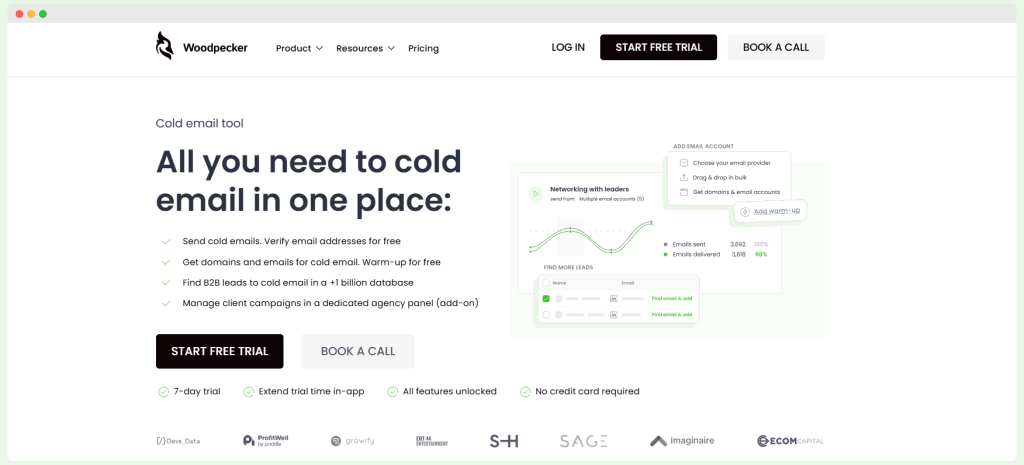
Key benefits of using Woodpecker for link building
- Advanced personalization. The platform supports detailed personalization beyond just first names, allowing you to customize outreach email marketing with multiple custom fields.
- Campaign analytics. Track sales metrics, open rates, response rates, and conversion metrics to continuously refine your outreach templates.
- Deliverability protection. Woodpecker includes features to protect your email sender reputation by controlling sending volumes and schedules.
- Integration capabilities: Connect with your CRM and other tools to streamline your entire link building workflow.
- Automated follow-ups. Woodpecker can send personalized follow-up sequences based on recipient actions, saving you countless hours of manual work.
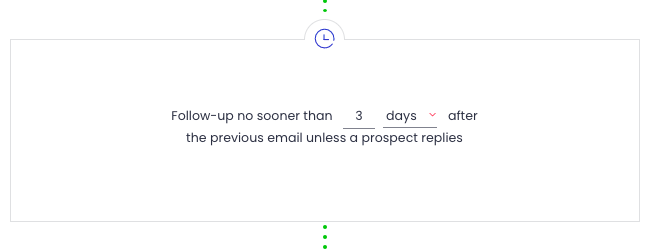
When implementing your outreach templates in Woodpecker, just remember to:
- Test different subject lines with A/B testing features
- Space out your follow-ups appropriately (typically 3-5 days apart)
- Set limits on total emails per day to maintain deliverability
- Leverage the condition-based sending to personalize follow-up sequences
Advanced tips for optimizing your link building outreach templates
Beyond the templates themselves, here are comprehensive strategies to significantly improve your overall outreach efforts:
#1 Deep research
Before sending any template, conducting thorough research on your link prospects can dramatically increase your success rate. This isn’t just about finding an email address – it’s about understanding who you’re reaching out to on a fundamental level.
Implementation approach:
- Create a systematic research checklist for each prospect:
- Read their last 5-10 articles to identify recurring themes and interests
- Review their social media profiles to understand what content they engage with
- Check their author bios across different publications to see how they position themselves
- Identify whether they’ve mentioned your competitors or similar resources
Content themes:
- Focuses heavily on data-driven approaches (mentions “data” in 7/10 recent articles)
- Recently exploring AI applications in content strategy (3 articles in past month)
- Frequently challenges conventional marketing wisdom (contrarian viewpoint)
Style notes:
- Uses personal anecdotes to open most articles
- Prefers concise, actionable content with bullet points
- Regularly references academic research to support claims
Recent engagement:
- Active discussion in comments about measuring content ROI
- Shared frustration about “fluff content” on Twitter last week
- Responded positively to case studies with specific metrics
These insights inform a highly tailored approach focusing on data-backed, unconventional content strategies with clear ROI metrics.

#2 Personalization
While templates provide necessary structure, sophisticated personalization dramatically drives results. This goes far beyond inserting a first name – it’s about creating emails that could only possibly be sent to this specific recipient.
Advanced personalization techniques:
Tiered personalization system:
- Tier 1 (highest-value prospects): Fully custom emails with multiple specific references
- Tier 2 (medium-value prospects): Semi-customized with 2-3 specific details
- Tier 3 (lower-value prospects): Template with basic personalization
Contextual relevance mapping:
- Identify specific content gaps in their recent articles that your content fills
- Reference how your resource complements (not replaces) their existing content
- Demonstrate understanding of their specific audience’s needs
Before and after example:
- Before (basic personalization):
Hi John,
I noticed your article about content marketing. I enjoyed reading it!
We just published a guide on SEO that might be a good fit for your site…
- After (advanced personalization):
Hi John,
Your recent piece on “Content Distribution Challenges for B2B SaaS” caught my attention – particularly your point about how measurement frameworks differ between demand gen and brand awareness content. That distinction resonated because we’ve been tracking exactly that pattern across our client base.
In fact, your approach to segmenting content ROI metrics aligns closely with research we’ve just completed on how B2B SaaS companies with 5-25 million ARR are adjusting their content measurement frameworks.

#3 Relationship-centric approach
The most successful link builders think beyond the immediate transaction, recognizing that sustainable results come from genuine relationships built over time.
Strategic relationship development:
Create a relationship nurturing system:
- Track all interactions with key prospects in a relationship CRM
- Schedule regular, value-based touchpoints that aren’t asking for links
- Develop a “relationship before request” protocol (minimum meaningful interactions before outreach)
Value-first sequence examples:
- Share their content with thoughtful commentary to your audience
- Connect them with relevant opportunities (speaking engagements, podcast appearances)
- Provide helpful industry insights without expectation
- Include them in expert roundups or feature their insights in your content
Case study:
One agency implemented a “3-2-1” protocol: three valuable interactions, two personalized comments on their content, one custom resource shared—all before making any link requests. This approach increased their conversion rate from 7% to 23% while building a network of ongoing relationships rather than one-off links.
#4 Data-driven optimization
Successful outreach requires continuous refinement based on performance data. This scientific approach transforms guesswork into strategic improvement.
Implementation framework:
Establish a rigorous testing protocol:
- Test one variable at a time (subject line, opening paragraph, call to action)
- Use statistically significant sample sizes (min. 50 emails per variation)
- Control for prospect type, day of week, and time of day
- Document all findings in a central template optimization document
Key metrics to track:
- Open rate (subject line effectiveness)
- Response rate (overall template effectiveness)
- Positive response rate (quality of value proposition)
- Link placement rate (ultimate conversion)
- Relationship continuation rate (future collaboration potential)
Real-world optimization example:
Template variation A/B test results:
- Control template: 22% open rate, 8% response rate, 3% conversion
- Test variation (added social proof in paragraph 2): 24% open rate, 14% response rate, 5% conversion
- Statistical significance: 98% confidence interval
- Implemented changes: Added social proof element to all templates
- Next test: Comparing question-based vs. statement CTA
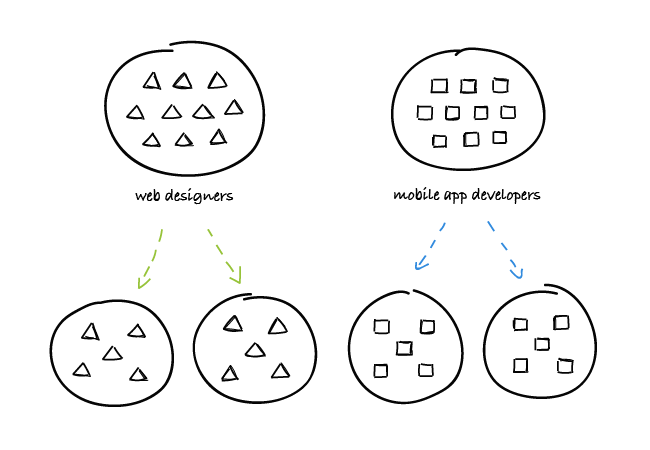
#5 Subject line
Your subject line often determines whether your email gets opened or ignored. Developing a systematic approach to subject line creation can dramatically improve your overall campaign performance.
Subject line frameworks that deliver results:
Question-based engagement starters:
- “Have you considered [specific approach] for [their recent topic]?”
- “[First name], question about your [specific article title]”
- “Missing piece in your [topic] strategy?”
Value-signaling approaches:
- “Quick win for your [specific page]: [benefit hint]”
- “Custom [data/analysis/resource] for [their company name]”
- “[Specific problem] solution for [their site name]”
Curiosity-triggering patterns:
- “Spotted this gap in your [specific content piece]”
- “Unusual finding about your [topic] coverage”
- “[Unexpected number/stat] regarding your [content area]”
Personalized value propositions:
- “[Name], thought this [specific resource] aligns with your [article]”
- “Following up on your [specific point] about [topic]”
- “Resource to support your recent [specific argument]”
Subject line testing matrix:
Test each template type with different prospect segments to identify patterns. For example, one agency discovered that:
- Technical audiences responded best to specific, value-oriented subject lines
- Marketing audiences engaged more with curiosity-based approaches
- C-level prospects opened question-based subjects at much higher rates
This segmented approach increased their overall open rates by 31% compared to using a single subject line strategy across all prospects.
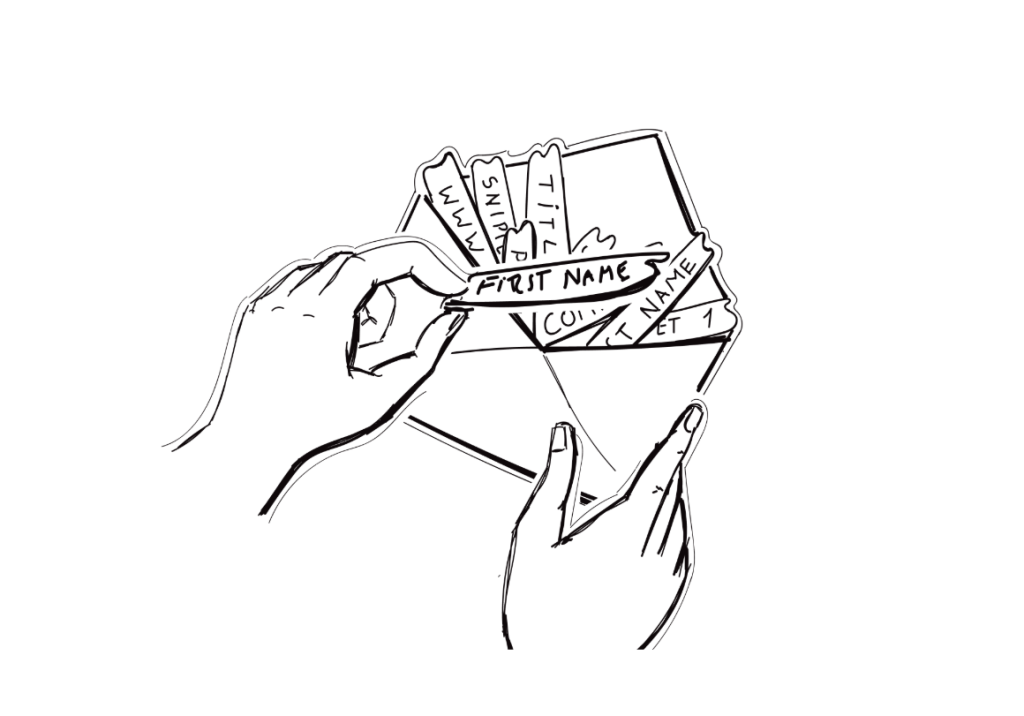
Common mistakes to avoid in link building outreach
Even the most refined link building outreach templates can fall flat when fundamental mistakes undermine your efforts.
Let’s examine these pitfalls in detail and explore how to avoid them:
The generic outreach trap
Mass emails with minimal customization are not just ineffective – they can permanently damage your relationship potential with valuable prospects.
Why it happens?
- Pressure to scale outreach volume without proportional increase in resources
- Underestimating recipients’ ability to detect template-based approaches
- Overconfidence in the quality of content being promoted
Real-world consequences:
- Site owners increasingly share bad outreach examples, creating industry blacklists
- Domain reputation damage when marked as spam by multiple recipients
- Wasted opportunities with high-value prospects who ignore generic approaches
Solution:
Implement a tiered outreach system that matches personalization depth with prospect value:
Outreach segmentation framework:
Tier 1 (Top 20% of prospects):
- 100% custom emails with no templated elements
- Specific testimonials or references to multiple content pieces
- Demonstrate deep understanding of their work
- Personalized value proposition unique to them
Tier 2 (Middle 30% of prospects):
- Semi-customized templates with substantial personalization
- Reference to specific recent content
- Tailored value proposition
- Customized introduction and conclusion
Tier 3 (Remaining 50% of prospects):
- Template-based but with basic personalization
- Standard value proposition with minor adjustments
- Batch processing approach
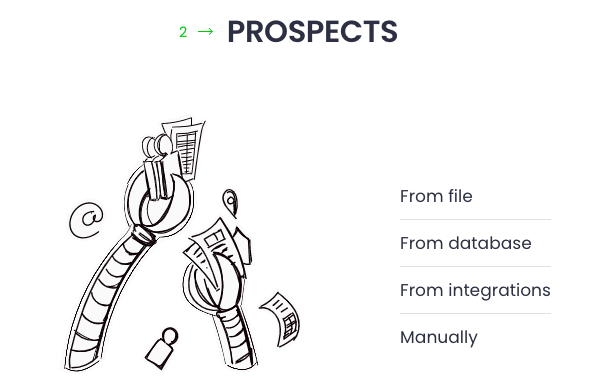
Self-centered value propositions
One of the most common yet easily fixable mistakes is failing to clearly articulate value for the recipient and their audience, focusing instead on your own benefits.
How to identify this issue in your templates?
- Count the ratio of “we/our/us” vs. “you/your” pronouns (aim for at least 2:1 in favor of “you/your”)
- Review whether benefits are framed from the recipient’s perspective
- Assess whether you explain how their specific audience would benefit
Before and after correction:
- Before (self-centered):
We’ve published an in-depth guide on content marketing that has received great feedback. Getting a link from your site would help us reach more readers and improve our SEO metrics.
- After (recipient-centered):
Your readers who enjoyed your recent article on content distribution would find particular value in our new research on how different distribution channels impact conversion rates for B2B companies in your industry. This data could help your audience optimize their own strategies based on the specific benchmarks we’ve documented.
The information overload problem
Long, dense emails that require significant cognitive effort to process are likely to be abandoned before the recipient reaches your call to action.
Structural solutions:
- Implement a “one screen” rule—emails viewable without scrolling on mobile
- Use progressive disclosure—lead with high value, save details for follow-up
- Apply the 3-1-2 principle: 3 short paragraphs, 1 specific ask, 2 value points
Formatting for scannable emails:
- Use white space strategically to create visual breathing room
- Implement bulleted lists for multiple points (maximum 3-4 bullets)
- Bold a maximum of one key sentence per paragraph
- Ensure the opening clearly establishes relevance in the first 5 seconds
Example optimization:
Hi [Name],
Your recent article on [specific topic] raised an excellent point about [specific insight]. This connects directly to research we’ve just completed.
The key finding that’s relevant to your work: [single, most valuable insight].
Would you be interested in seeing how this data might complement your coverage of [their topic]?
[Name]
Unclear requests
Vague calls-to-action create decision friction, often resulting in no decision at all. Clear, simple requests dramatically improve response rates.
Principles for effective CTAs:
- Ask exactly one thing (multiple options create decision paralysis)
- Make the request specific and concrete
- Keep it low-commitment initially
- Make responding as frictionless as possible
Examples of effective CTAs:
- “Would you be open to a 5-minute call this week to discuss this opportunity?”
- “If this interests you, would you prefer I send over the full research or a quick summary first?”
- “Could you let me know if adding a link to this resource in your article would be possible?”
Ineffective CTAs:
- “Let me know what you think.”
- “I’d love to hear your thoughts on a potential collaboration.”
- “Please let me know if there’s any way we can work together.”
Targeting misalignment
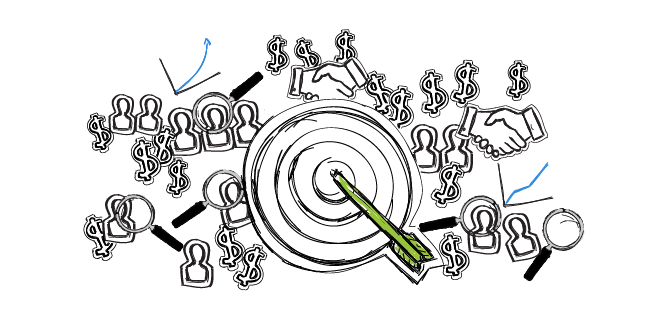
Reaching out to sites that aren’t relevant to your content or don’t typically link out is a fundamental waste of resources that could be directed toward higher-probability targets.
Pre-outreach qualification checklist:
Content relevance assessment:
- Does the site cover topics directly related to your content?
- Have they linked to similar resources in the past 6 months?
- Is your content format (guide, tool, data) something they typically reference?
Technical link profile analysis:
- Check if they use nofollow for all external links (indicating policy against followed links)
- Review whether they’ve added new external links in recent content
- Assess domain authority alignment (is your site within their typical linking range?)
Relationship qualification:
- Have they engaged with similar content on social media?
- Do they respond to comments on their content?
- Have they mentioned struggling with problems your content helps solve?
Implementation tip:
Create a simple 1-10 scoring system for prospects based on these factors, and only pursue those scoring 7+.
The single-touch fallacy
Abandoning prospects after a single unanswered email dramatically lowers your overall conversion rate, as many successful links come from follow-up messages.
Follow-up sequence optimization:
- Optimal timing pattern: 3-4 days, 7 days, 14 days
- Change the value proposition with each follow-up
- Use different angles and benefits in subsequent messages
- Reference current events or new developments to add timeliness
Effective follow-up templates:
Example 1:
Subject: Quick follow-up: [Original subject]
Hi [Name],
I wanted to briefly follow up on my previous email about [topic].
Since I reached out, we’ve actually [new development or additional insight].
I understand you’re likely busy, so I’ve [made it easier by doing X].
Would this be something that interests you?
Best,
[Your name]
Example 2:
Subject: Thought you might find this useful, [Name]
Hi [Name],
While preparing some resources for another project, I came across this [relevant resource/tool/article] that connects directly to your recent work on [their topic].
[Brief explanation of why it’s valuable]
I’m still happy to discuss the [original pitch] whenever you have time, but wanted to share this either way as I thought you’d find it valuable.
All the best,
[Your name]
Mobile optimization oversights
With over 60% of professionals checking email on mobile devices first, overlooking how your emails appear on smartphones can significantly impact your success rate.
Mobile optimization checklist:
Subject line visibility:
- Keep under 40 characters to ensure full display on mobile
- Front-load keywords so they’re visible in truncated views
Preview text strategy:
- Craft custom preview text that complements your subject line
- Avoid repetition between subject and preview text
- Use this space to add personalization signals
Content structure for small screens:
- Single-column layouts only
- Short paragraphs (2-3 sentences maximum)
- Critical information in the first 2 paragraphs
- Minimum 14pt equivalent font size
Testing protocol:
- View test emails on both iOS and Android devices
- Check both portrait and landscape orientations
- Test load times with images (if used)
Implementation example:
Subject: Resource for your AI marketing guide
Preview: John, regarding your recent article on predictive analytics…
[Brief, mobile-friendly email content]
The future of link building outreach

As search engines continue to evolve and content creators become more selective about external links, the future of successful link building outreach templates will emphasize several key strategies that go beyond traditional approaches.
Let’s explore these emerging trends in detail:
Hyper-personalization through data intelligence
The era of basic mail merge personalization is fading. Tomorrow’s most successful link builders are leveraging advanced data analytics tools to create deeply personalized outreach that resonates on multiple levels:
- Analyze a prospect’s content patterns to identify specific content gaps that your resources could fill.
- Reference multiple pieces of work with specific insights about how they connect.
- Customize outreach based on the prospect’s engagement patterns (do they respond better to data-driven or storytelling approaches?).
- Create prospect-specific micro-content exclusively before requesting links.
Example:
Hi Sarah,
I noticed in your last three articles about content marketing (especially your Jan 15th piece on distribution), you’ve been exploring how AI is changing content creation workflows.
What caught my attention was your point about [specific unique insight]. This aligns perfectly with research we just completed showing that [relevant data point].
I’ve actually put together a custom analysis of how this trend is specifically impacting [their industry niche] companies like [examples of their clients/audience]. I’d love to share this exclusive breakdown with you before we publish our full findings next month.
Would you be interested in taking a look?
Multi-channel relationship development
Single-channel outreach is becoming increasingly less effective. Forward-thinking link builders are creating coordinated touchpoints across platforms:
- Begin with non-intrusive social engagement (thoughtful comments, sharing their content with added value).
- Follow relevant prospects on multiple platforms and engage authentically before email outreach.
- Use video messaging platforms for personalized follow-ups that stand out.
- Leverage industry events (virtual or in-person) as opportunities for meaningful connection.
Example:
A successful agency reported 37% higher response rates when their outreach followed a pattern of:
- Two meaningful social media interactions
- Email outreach referencing those interactions
- LinkedIn connection with personalized message
- Follow-up email with additional value
Value-first strategies that transform the dynamic
Traditional outreach positions the sender as a requester and the recipient as a gatekeeper. Value-first approaches invert this dynamic by making recipients actively want what you’re offering. Bet on:
- Creating custom data visualizations of a site’s industry that they have exclusive rights to publish first.
- Offering to update and expand their outdated but popular content rather than just requesting a link.
- Providing access to proprietary tools or research before mentioning link opportunities.
- Identifying and fixing technical issues on their site as an introduction.
Example:
One content team created a detailed competitor analysis for each of their top 50 link prospects, showing content gaps and opportunities. This was sent with no request—just as a valuable resource. Two weeks later, their follow-up asking about potential collaboration received a 64% response rate compared to their previous 11% baseline.
Collaborative content creation beyond simple links
Rather than viewing link building as a transaction, progressive SEO professionals are approaching it as an opportunity for meaningful content partnerships:
- Proposing joint research initiatives that benefit both parties’ authority.
- Creating complementary content series where each site publishes different components.
- Developing interactive tools or resources co-branded by both organizations.
- Organizing roundtable discussions or webinars featuring multiple experts who can cross-link content.
Template:
Subject: Collaboration opportunity: [Specific Project] with [Your Company] + [Their Company]
Hi [Name],
What would happen if we combined your expertise in [their specific strength] with our capabilities in [your unique advantage]?
I’ve been following your work at [Company], particularly your [specific content series or approach], and see a unique opportunity for us to partner on a project that would benefit both our audiences.
Specifically, I’m thinking about a [detailed collaboration concept] that leverages:
– Your exceptional insights into [their specialty]
– Our comprehensive data on [your unique data or perspective]
– A shared creation approach that highlights both our strengths
Rather than a simple guest post exchange, this would be a true collaborative asset that we both promote and link to across our platforms.
I’ve attached a brief concept outline to give you a clearer picture of what this might look like. Would you be open to a 15-minute call to explore this further?
[Signature]
Community participation that builds natural link magnets
The most sustainable link building approaches focus on becoming a valuable member of industry communities long before requesting links:
- Become an active, helpful participant in industry forums, Slack groups, and subreddits.
- Create resources specifically addressing community questions and pain points.
- Establish thought leadership through consistent value contribution.
- Build relationships with content creators through genuine support and engagement.
Documented results:
Brands that spend at least 3 months actively participating in niche communities before beginning outreach report conversion rates up to 3x higher than cold outreach approaches.
Conclusion
Effective link building outreach templates are essential tools for any SEO professional looking to build quality backlinks at scale. You can dramatically improve your link acquisition success rate by understanding the fundamental principles of successful outreach, customizing these templates to your specific needs, and continuously refining your approach based on results.
Remember that behind every website are real people making decisions. The most successful outreach balances efficiency with genuine personalization and always focuses on creating mutual value.
Combine these templates with thorough research, strategic targeting, and consistent follow-up to transform your link building results.
No matter if you’re focusing on guest post opportunities, broken link building, resource page inclusion, or content promotion, the templates and strategies in this guide provide a solid foundation for your outreach campaigns. Implement them thoughtfully, measure your results, and adapt as needed to create a sustainable link building system that drives long-term SEO success.

